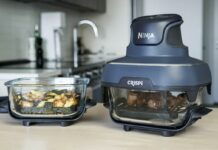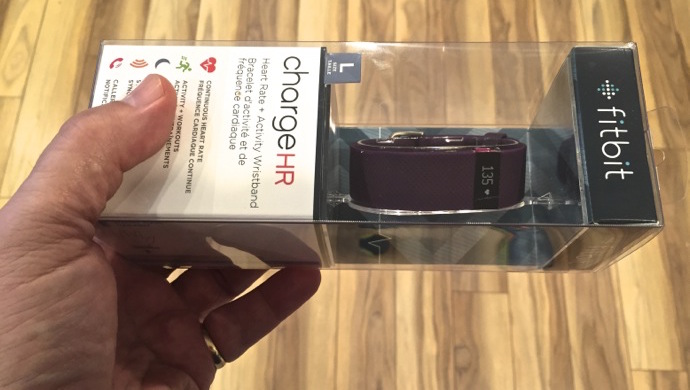
In the world of fitness and activity trackers, Fitbit dominates. With sales of these wearables taking off, Fitbit—which has been selling the devices since 2008—holds nearly 70 percent of the market. The new Fitbit Charge HR is a prime example of why the company has been so successful. Add in a vast ecosystem of app partners and supporting hardware like its Aria smart scale, and going with the Fitbit Charge HR is a good bet to help you to be successful in reaching your own fitness goals.
|
Fitbit Charge HR Specs
|
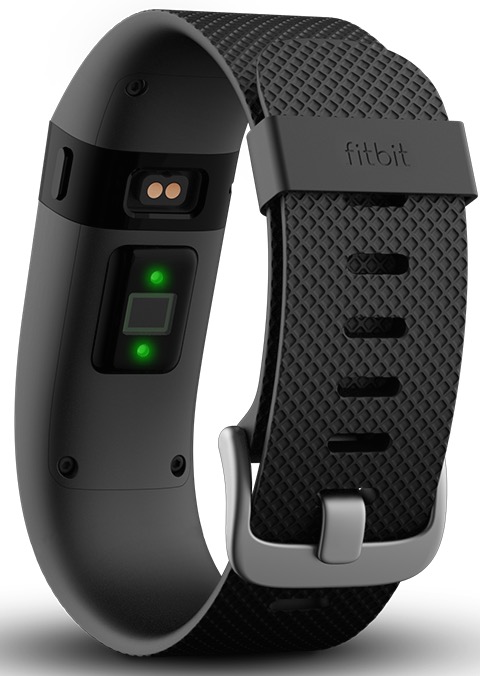
Disclaimer: I’m a Fitbit Fan
Let’s get this out of the way upfront. I have used other activity trackers, but I’m a Fitbit fan. I started with a Fitbit Zip (a great, inexpensive device that’s survived two rounds in the washing machine), added an Aria smart scale and bought a Fitbit Force before it was recalled. The Fitbit Charge HR reviewed here was purchased as soon as it was announced. While the black model has been in stores for a month or more, opting for burgundy meant a delay. However, the Charge HR arrived two weeks ago, time enough to put it through its paces. And it was worth the wait—the device, not necessarily the color.
The Wrist Strap
This first point is somewhat specific to the Fitbit faithful.
While the Force was recalled because something in its strap and post-and-hole closure caused a rash with some users, it’s that closure mechanism itself that I hated. To fasten the Force, you pushed a pair of metal posts through holes in the wristband. I found the process was awkward and the results less than secure—it would fall off at inopportune times.
The Fitbit Charge and Flex still use this post-and-hole scheme, while the Charge HR uses a traditional buckle-style closure. Easy to use and no worries about it popping off. In my opinion, that alone is reason enough to go with the Charge HR.
The wristband itself is made of elastomer, making it flexible and comfortable. That’s a good thing, because the Charge HR can track your sleep as well, so it’s meant to be worn for extended periods of time.
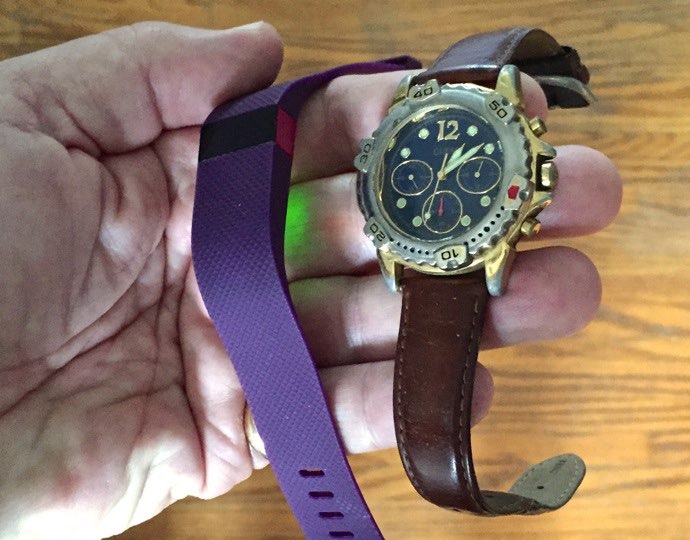
The entire device is extremely light weight and low profile. It’s much smaller and less obtrusive than a typical wristwatch. Make sure to check your wrist before buying —the Charge HR is offered in several sizes.
Basic Activity Measurements
Like most fitness bands, the Charge HR tracks several key activities. The number of steps you’ve travelled and distance travelled are used to calculate an estimated number of calories burned. We all have different stride lengths and each person’s numbers also vary depending on whether they are walking or running.
Fitbit lets you configure your stride length for both situations using your Fitbit Dashboard (more on that later). The Charge HR itself closely matched my manual steps count—and that returned by my iPhone 6—and by tweaking those stride length settings to match your own, the distance covered can also be very accurate.
Like the Fitbit Charge, the Charge HR can also track floors climbed, active minutes and sleep. I found it wasn’t smart enough to spike out a 30-minute nap as sleep time, but it reliably captured sleep data at night, including periods of restlessness. This happens automatically, no need to engage a sleep mode.
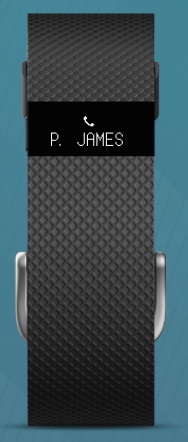 Why track your sleep? If you’re feeling low on energy or fatigued, being able to pull up a graph showing when you sleep each night, for how long and whether it was solid sleep, restless or interrupted can go a long way toward addressing the issue. For one thing, it can help to implicate or eliminate lack of sleep as a cause for your condition.
Why track your sleep? If you’re feeling low on energy or fatigued, being able to pull up a graph showing when you sleep each night, for how long and whether it was solid sleep, restless or interrupted can go a long way toward addressing the issue. For one thing, it can help to implicate or eliminate lack of sleep as a cause for your condition.
There is also a silent vibrating alarm for waking up without disturbing everyone else.
Display
The monochrome OLED display is nothing fancy, but it’s bright enough to be seen outdoors in sunlight and has just enough room to scroll Caller ID info (contact name and phone number) if you pair it with your smartphone.
Otherwise, pushing a side-mounted button cycles through data such as steps taken presented with numbers and minimalist icons. It also shows the time.
Heart Rate Sensor
The “HR” in Charge HR stands for Heart Rate. In this case, it’s an optical heart rate sensor in the form of two LED lights mounted beneath the case.
It’s also the primary reason the Charge HR carries a $30 premium over the Charge.
The Charge HR measures and stores your heart rate and categorizes it as either Peak (high intensity), Cardio (moderate exercise), Fat Burn (low intensity exercise) or Out of Zone (resting). Each zone has its own icon on the display, along with your measured heart rate so you can see how you’re doing at a glance.
Accuracy can be a little hit or miss. In general, it seemed pretty good, but occasionally would spike for no apparent reason. On the plus side, I didn’t have to stand still to get a reading—a limitation with some fitness trackers I’ve used. I think the key thing to remember is that this is not medical grade equipment, so asking for 100 percent accuracy is a bit much. The Charge HR’s measurements should be good enough to get a decent read, especially when graphed over time to pick out trends.
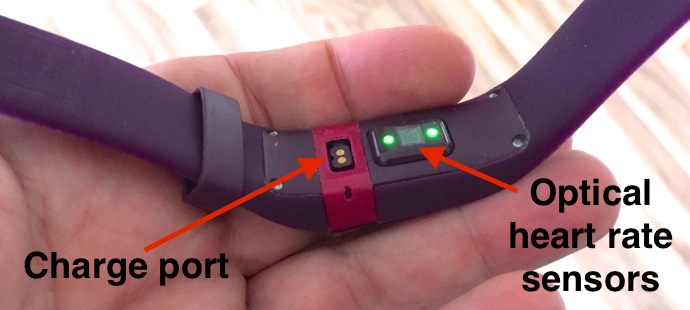
Battery Life
One of the advantages of a dedicated fitness tracker like the Fitbit Charge HR over a smartwatch with tracking capabilities is battery life. Instead of the typical smartwatch average of one day, Fitbit claims up to five days between charges for the Charge HR.
I averaged a bit over four days, but that was with the heart rate monitor always on. That feature can be turned off for improved battery life.
Recharging takes about two hours. Fitbit supplies a USB cable with a custom connector that plugs in the back of the device. It’s not very fiddly, but don’t lose the cable.
Fitbit Dashboard, Apps and Ecosystem
As I alluded to earlier, one of the key selling points of the Charge HR over competing fitness trackers is Fitbit’s established presence in the industry.
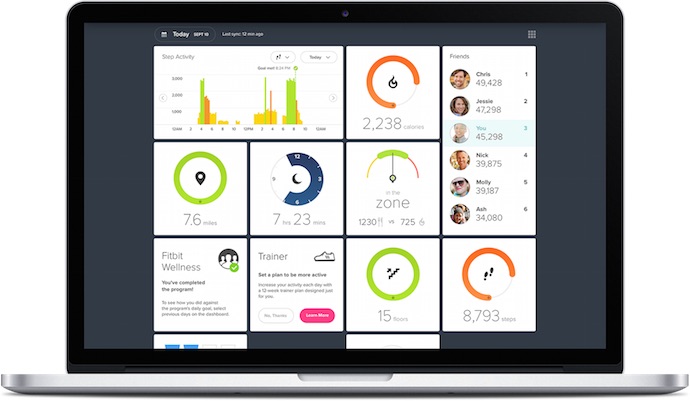
The Fitbit Dashboard (browser-based) has been repeatedly improved and is the software to beat when it comes to presenting every aspect of your fitness data in a meaningful way. The company also offers mobile apps for iOS, Android and Windows and its through your smartphone (or a PC) that the Charge HR uploads your activity data, using a Bluetooth connection. You don’t need to be tethered, the tracker stores the data for up to seven days and uploads it when it comes into range of a paired device.
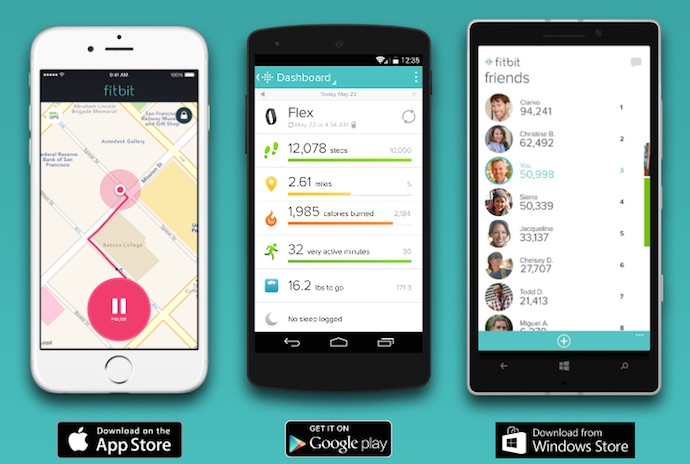
Fitbit also makes the Aria smart scale—another Fitbit device I own. The Aria is connected by Wi-Fi and automatically updates your weight and body fat percentage to your Fitbit account—supplementing the data from the Charge HR. This added bit of information lets you see the real time connection between eating habits and weight. Turns out that when I hang out at my beachfront patio grill in the summer, my weight always spikes the following morning. I knew that before, but having the data in my face with the dots connected makes it a little more likely that I’ll order the salad instead of the fries with my burger next time …
A huge number of third party app makers also integrate with Fitbit. I use one called MyFitnessPal (recently purchased by Under Armour) that offers bar code scanning and a massive database of Canadian food and restaurant nutritional info to upload my meals into that Fitbit Dashboard.
The one thing Fitbit doesn’t do (at least without the help of third party solution) is integrate with Apple’s Health app in iOS. Hopefully whatever issue is in the way there gets resolved.
For those concerned about Internet security, Fitbit commits to never selling personal data and has a comprehensive security policy covering data collection, storage and sharing with third parties.
Recommendation
If you are serious about tracking your fitness and activity, I think Fitbit offers the most compelling overall experience in the industry. You can keep it as simple as tracking basic stats on your smartphone or leverage the Fitbit Dashboard, Aria smart scale and third party integration to track, analyze and plan every aspect of your fitness, eating and sleeping regimes.
While the Fitbit Charge covers the bases for basic activity tracking, the Charge HR is well worth spending an additional 30 bucks for. You get heart rate monitoring—which is a very useful feature—along with a far superior buckle strap fastener.

